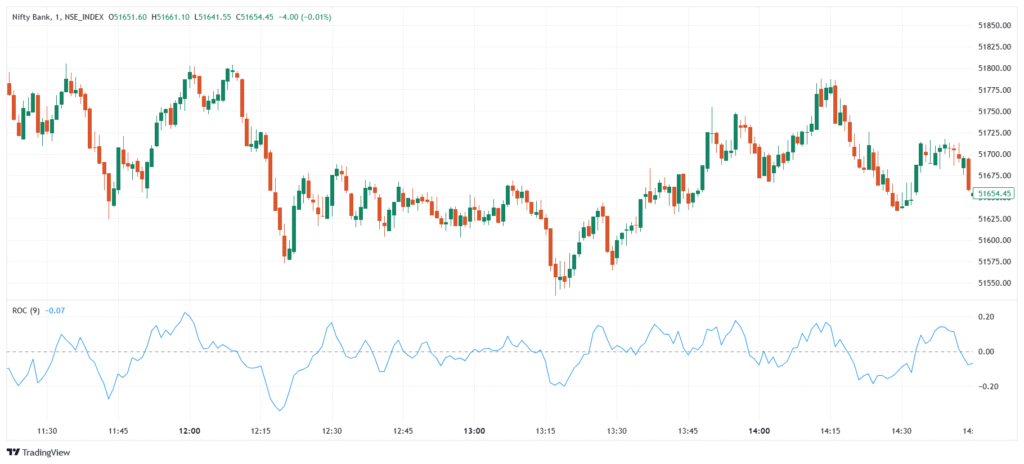The Rate of Change (ROC) is a momentum oscillator that measures the percentage change in price between the current price and the price a set number of periods ago. It helps traders understand how fast price is moving and in which direction. ROC values fluctuate above and below a zero line: positive values indicate upward momentum, and negative values suggest downward momentum. It is often used to identify trend strength, reversals, and overbought/oversold conditions.
Significance
- Measures price momentum based on percentage change over time.
- Identifies trend direction — positive for uptrend, negative for downtrend.
- Detects overbought and oversold conditions when ROC reaches extreme highs or lows.
- Confirms breakouts and trend strength when ROC moves strongly away from zero.
- Useful in all market types, especially for swing and momentum trading.
Indicator Components & Values
- ROC Line → Oscillates above and below zero, showing the strength and direction of momentum.
- Zero Line →
- Above zero → Positive momentum (bullish).
- Below zero → Negative momentum (bearish).
- Lookback Period → Commonly set to 12 or 14 periods, but adjustable for sensitivity.
- Overbought/Oversold Zones → No fixed levels, but traders watch for extreme spikes to signal potential reversals.
Trading Strategy
- Zero Line Crossover → Buy when ROC crosses above zero, sell when it crosses below zero.
- Divergence Strategy → Buy when price makes a lower low and ROC makes a higher low (bullish divergence); sell on the opposite.
- Trend Confirmation → Use ROC to confirm the strength of a breakout or trend.
- ROC + Moving Average → Filter trades by checking ROC direction against a 50 or 200 MA.
- ROC + RSI → Combine with RSI to avoid false signals and confirm momentum shifts.
Rate this post
